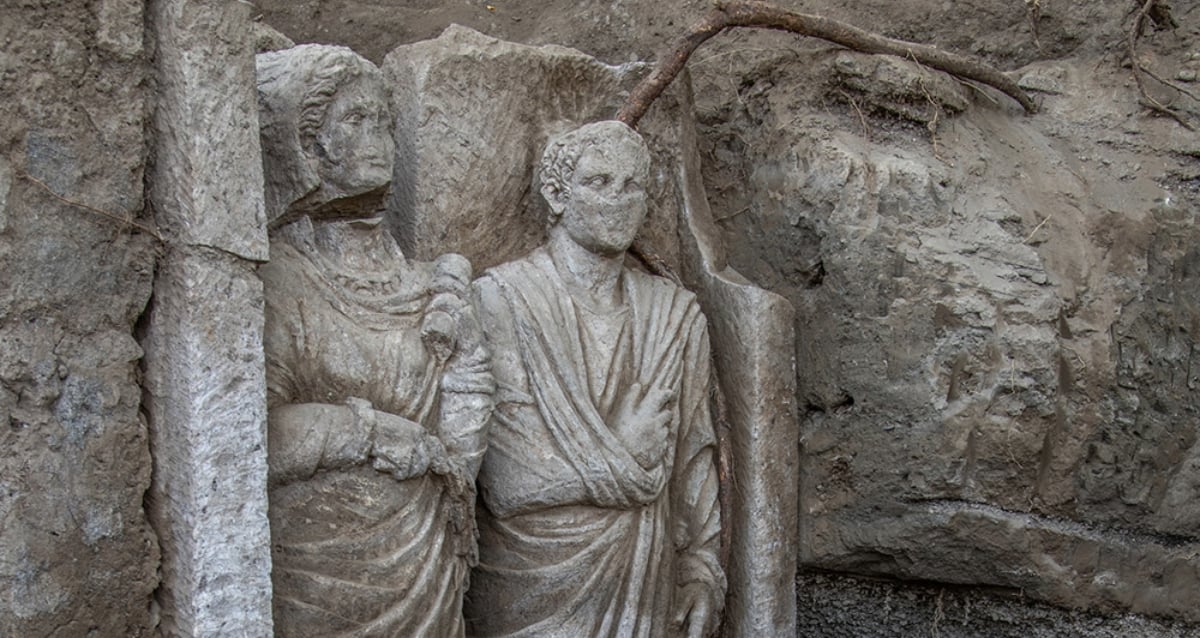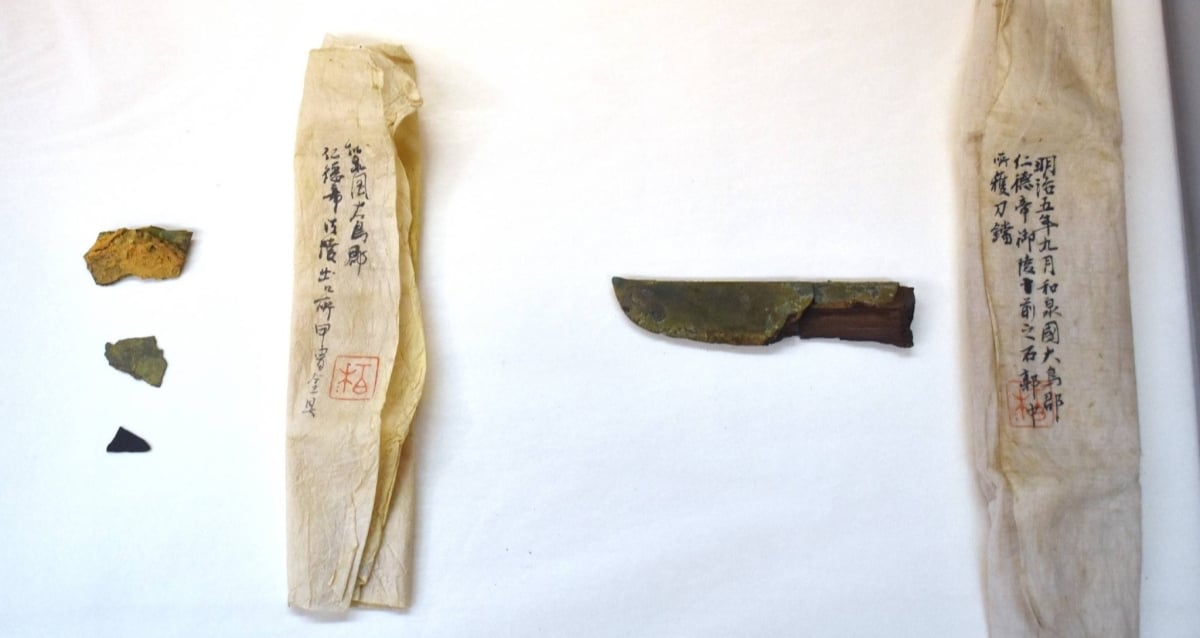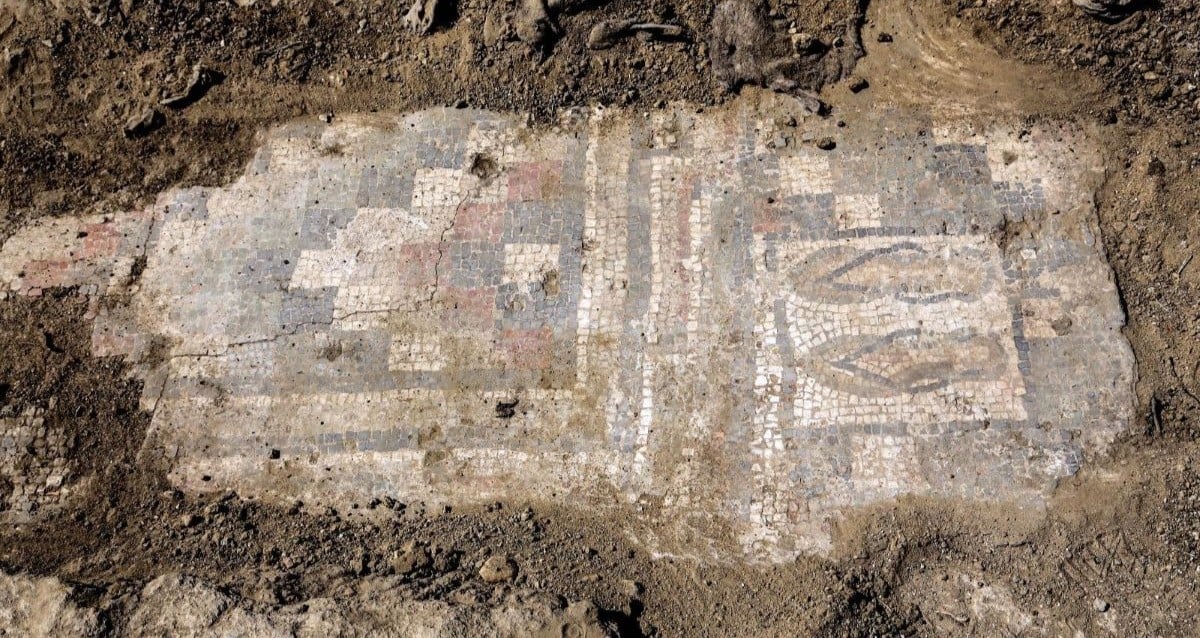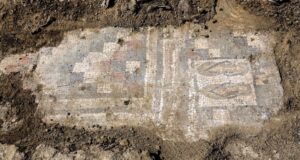“Ancient Secrets Unveiled: Mysterious Life-Size Statues Discovered Guarding Pompeii’s Entrance!”
Within the figure’s right hand is a handful of laurel leaves, an item often used by priests and priestesses to purify and bless spaces during rituals. The presence of these leaves in the relief overwhelmingly points to the female figure being a spiritual leader.
Based on the lunar-inspired amulet she wears, called a lunula, archaeologists believe the woman may have belonged to the cult of Ceres, the Roman goddess of agriculture and fertility.
In ancient Roman mythology, Ceres is strongly affiliated with the Moon, as the lunar cycles coincided with those of the female body and of the harvest season. Many young Roman women wore a lunula as a form of protection and good luck before their marriages.
Since it was uncommon to see married women with this type of iconography, researchers believe the female figure in the relief was likely a priestess in the cult of Ceres.
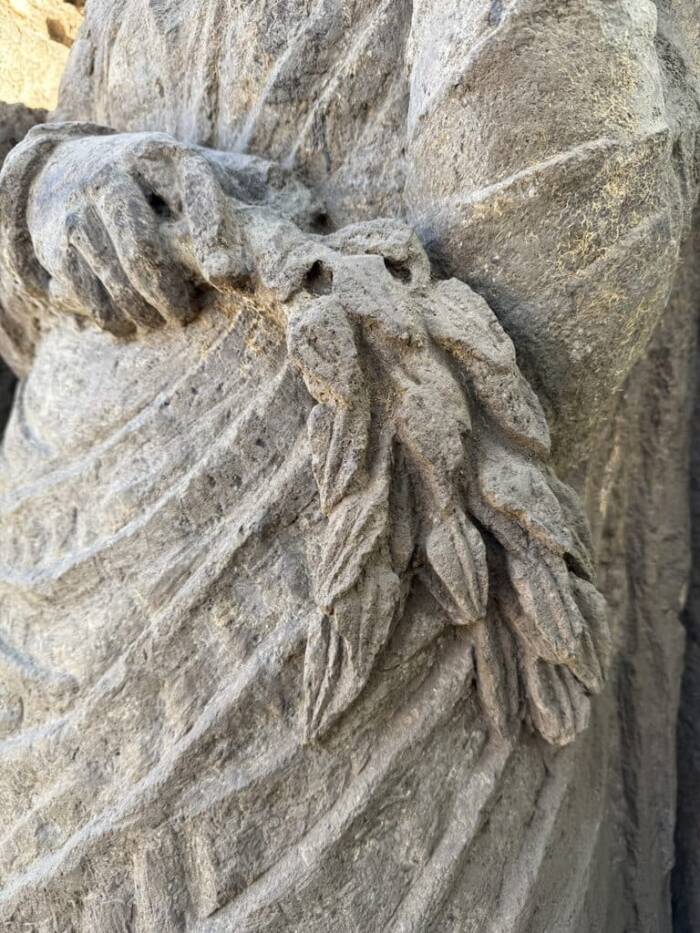
Pompeii Archaeological ParkA female figure holds an aspergillum of laurel leaves, an item used to purify and bless spaces during rituals.
This finding is one of only a handful of examples of Roman women working as priestesses in Pompeii. Typically, Roman women worked primarily in the domestic sphere, controlling the affairs of their homes and families.
However, some women found influence in society by training as priestesses. Through this work, they maintained a level of power comparable to that of their male counterparts.
“Being a priestess was the highest social rank to which a woman could aspire. Priestesses had an important role in the public sphere. They had a position of power far removed from other women and very similar to male priests,” the Pompeii Archaeological Park wrote in a study about the funerary monument.
